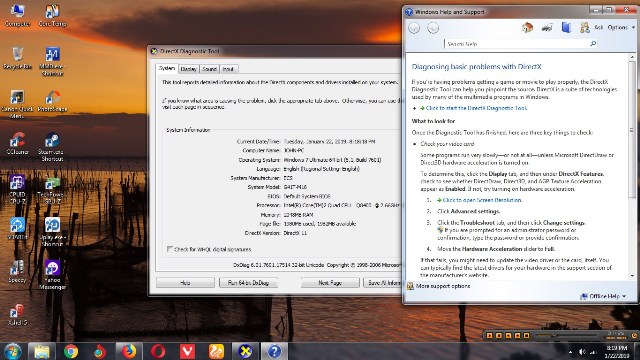

Is there a way to test DX specific effects? Such as some kind of 3DMark that demonstrates "now that you have an 8.0 capable card, let me you show you this cool fog effect your DX7 card never could."Ĭould DirectX 8.0 effects be shown on DirectX 7 or DirectX 6 cards but just perform really bad? Meaning. Would getting an old DirectX 8.0 game running on newer Windows, with a newer GPU, show me the same thing? Is it true that newer DirectX versions emulate older version instruction, and if so, "might look and feel different" because it's kinda being emulated? Is there a solid way to determine a game's D3D platform version? Which could just be "sure it will still work on an older card, you just won't see everything we programmed the game to do." But they still don't say which DirectX version it's really intended for. Instead it usually lists minimum supported cards. How does one determine what DirectX version a game was designed for? Games don't typically list "this was designed by developers using DirectX 8.0". I found 2 other threads with valuable information. So if I wanted to taste life before DirectX 9.0c, is it just a simple matter of installing the older card, install Windows XP, and don't upgrade it beyond DirectX 8.1 and try a game? And if so, what is a DirectX 8.0 - 8.1 specific game? What works of art are out there that cherished 8.0 - 8.1 ? There is no standalone *download for 11.x.Does it make any sense to purposely downgrade to a Geforce 4 card to try and see what life was like before DirectX 9 showed up? Geforce 4 is listed as a DirectX 8.0 supported chip. You need to have installed Service Pack 1, at least, to be updated to the latest DirectX. There is no standalone download for 11.x.

You should have the latest DirectX included and updated through Windows Updates.

Once again, Windows 8, 8.1, RT 8.1, and even server 2012 comes with DirectX 11.x. There is no standalone download for 11.x or 12.x. Windows 10 and Server 2016 should have the latest DirectX (11.x or 12.x) included and updated through *Windows Updates. At the bottom of that, you'll see DirectX Version listed. Under the System tab, there's a System Information section. This brings up the DirectX Diagnostic Tool (dxdiag). To check what version you have press the Windows Key + R and type in dxdiag. TIP: Hard to fix Windows Problems? Repair/Restore Missing Windows OS Files Damaged by Malware with a few clicks


 0 kommentar(er)
0 kommentar(er)
